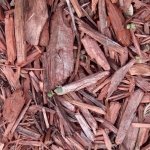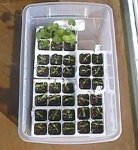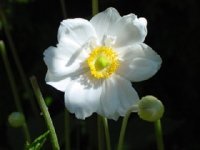Controlling the Lily Leaf Beetle
If you grow lilies, you're probably familiar with the scarlet lily leaf beetle (Lilioceris lilii). And if you don't know this pest, be on the lookout. Both the larvae and adult beetles eat lily foliage; a bad infestation may reduce plants to naked stems.
A European native, lily leaf beetle was discovered in Montreal in 1945 and seemed confined there for decades until it found its way to Massachusetts in 1992. Since then, it has spread rapidly and is now a major pest across the Northeast.
Lily Beetle Life Cycle
The adult beetles are about a half-inch long and bright red, with black legs and antennae. They emerge from hibernation around the time lilies sprout, and the adults begin feeding and laying eggs on the undersides of leaves. The eggs hatch in four to seven days and the slug-like larvae begin eating. These hump-backed creatures are covered with black "goo," which is actually their excrement carried on their backs as a defense against predators (yuck!).
After two to three weeks the larvae drop to the ground to pupate. A few weeks later, they emerge as adults and again begin feeding on lily foliage, continuing to do so through the rest of the growing season. The adults overwinter in soil or plant debris.
Control
The slow-moving adult beetles are easy to spot and hand pick. Check lilies daily as soon as they begin to sprout; if you are diligent about crushing adults and egg masses on leaf undersides at the beginning of the season, you can nip an infestation in the bud. If you can't bear to squash the insects barehanded, the insecticide spinosad will control them.
Once the larvae are present, control is more of a challenge and handpicking is decidedly less pleasant -- you probably want to don a pair of gloves for squish patrol. Not only are they harder to see, the excrement on their backs makes them slimy and difficult to squish. This protective covering also makes them challenging to control with sprays.
If you can't stand squashing these insects by hand, the insecticide spinosad offers control. Spinosad is made from the fermentation of a naturally occurring soil bacteria. This organic biological pesticide is also effective at controlling caterpillars, leaf miners, thrips, and fire ants. It's sold under various trade names; read pesticide labels, looking for spinosad as the active ingredient. Spinosad attacks the nervous system of the pests, causing them to eventually become paralyzed and die. It is toxic to bees and should only be sprayed in late evening or early morning when bees are not flying. Neem oil kills young larvae and repels adult beetles.
Lily leaf beetle lays its eggs only on true lilies (that is, in the genus Lilium) and fritillaria. True lilies include Asiatic and Oriental lilies, as well as tiger lilies, Turk's cap lilies, and Easter lilies. However, the beetle has been observed feeding on other plants, including hollyhock, Solomon's seal, and hosta. It is not a pest of other "lilies" such as daylilies, calla lilies, and water lilies, none of which are true lilies.
Read more from the National Gardening Association.








